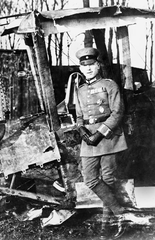Select pages - there are more than 4 available
The Badges of Honour, Merit and Courage.
Forging a weapon like a sword is both an art and a skill. First of all, you have to choose the right metal and not all metals are equal, they come in a variety of different qualities and of course not all are suitable: generally, the stronger the raw material is, the better your weapon will be. Carbon steel is one of the best. The wielder of a mighty sword must have the same qualities as the sword itself.
Becoming a true warrior hero and achieving merit is a state of mind and a process: It also connects you with every other Soul who has followed the same path in a unique bond that has incredible and surprisingly ‘tangible’ effects. Virtually all heroes were warriors and most were kings – konungr.
A Konungr was not some puffed up daisy hiding away in a plush mansion, but a true warrior who led his people into battle with victory as the goal.
Heimdall, popularly known as the watcher guardian of the Bifrost and the Æsir, as well as the father of all men (this word is not necessarily a gender indicator but has a special meaning that will be addressed later on) and although there is much more to this great and complex figure, a brief rundown of his appearance as Rigr in the Rígsþula or Rígsmál (Lay or Song of Rig), is put forth below. The word Rig itself is cognate with the other well known word for king - Rex, Rig and Rajan (Latin, Old Irish, Sanskrit) among others. Although the story has wrongly (deliberately) been presented as a type of racial caste system, it is not.
In the legend below, Rig visits a series of couples in the following progression: great grandfather & great grandmother, grandfather & grandmother, father & mother. He sleeps between each couple and they in turn produce a child with various characteristics.
“According to the legend, in the early days of humanity Heimdall took on the persona of Rig to see how mankind lived. He wandered the roads, staying with several families as he traveled.
He enjoyed the custom of hospitality with each household for three nights before continuing on his way. To each couple he stayed with he gave valuable advice on how to manage their properties and go about their labors.
Outside of this custom, he also spent one of those nights with the wives of each household. Nine months later, three children were born.
The first child, Thraell, was brutish and ugly. He became the ancestor of the thralls, Norse culture’s lowest class of slaves.
Rig’s second son was Jarl. He was strong and hearty and became the ancestor of free farmers and laborers.
The third boy was Karl, the ancestor of warriors. He was a handsome boy who loved adventure, hunting, and fighting.
Some years later, Jarl had a son of his own. Kon was not only a brave fighter like his father, but was also exceptionally wise and just.
Rig reappeared that day and adopted his grandson as his own. He taught Kon to read and write runes before telling him to strike out and claim land of his own.
Kon (ungr) became the ancestor of kings and chieftains. His descendants were not only great warriors, they were also wise and well-educated men.”
https://mythologysource.com/heimdall-norse-god/

The Pour le Mérite, established by King Frederick II of Prussia was one of the highest awards given for both military and civil (as a separate class from 1842), honourable achievements. It was also the highest Prussian order of bravery for officers of all ranks.
Just a few are selected here:
Photo Gallery

Wilhelm Sebastian von Belling
(15 February 1719 – 28 November 1779).
He was a Prussian Hussar general under Frederick the Great. He received the Pour le Mérite for his actions during the 7 years war. He later commanded the dreaded Belling – Hussars whose motto was Vincere aut mori – victory or death, reminiscent of the Spartan ἤ τάν ἤ ἐπί τᾶς.

The great Generalfeldmarschall
Anton Ludwig Friedrich August von Mackensen (6 December 1849 – 8 November 1945).
He was one of Germany’s most adept military leaders. Following a slew of successes he received the Pour le Mériteat age 65, on November 27, 1914.

Max Immelmann (21 September 1890 – 18 June 1916).
Originally from Dresden, he was the first German World War I hero aviator to win the Pour le Mérite, which was subsequently nicknamed "Blue Max" after him. He is very well known in aviator circles for the brilliant maneuver the Immelmann turn.

Jacob Ludwig Karl Grimm (4 January 1785 – 20 September 1863).
Also known as Ludwig Karl, and the elder of the Grimm duo, he is the famous and immensely influential German: author, linguist, philologist, jurist, folklorist, discoverer of Grimm's law of linguistics, co-author of the monumental Deutsches Wörterbuch (the most comprehensive German dictionary), the author of Deutsche Mythologie (German mythology), and the editor of Grimms' Fairy Tales!
The award for the military class was stopped in 1918 due to the abdication of Kaiser Wilhem II. Sadly, in these days of cowardice, cronyism, nepotism and rule by coercion & consensus, the civil award too has lost its meaning.
It doesn’t have to stay that way.
Everything lost can be reclaimed.
Anyone interested in the recipients of the awards over the years may conduct their own research here as they see fit:
https://military-history.fandom.com/wiki/List_of_the_Pour_le_Mérite_(military_class)_recipients
https://military-history.fandom.com/wiki/Category:Recipients_of_the_Pour_le_Mérite_(civil_class)
https://en.wikipedia.org/wiki/List_of_the_Pour_le_Mérite_(military_class)_recipients
https://en.wikipedia.org/wiki/List_of_recipients_of_the_Pour_le_Mérite_for_Sciences_and_Arts
optimum est alius nondum venit
The best is yet to come
